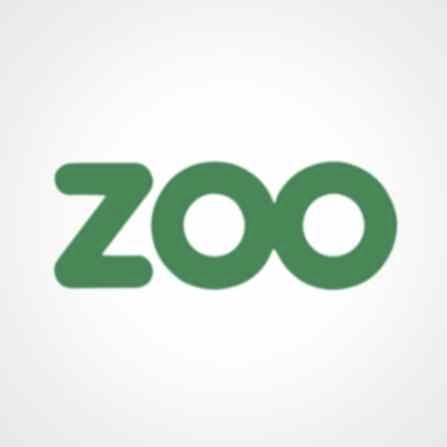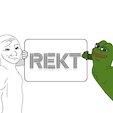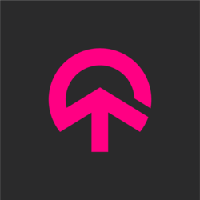Coin-related
Price calculator
Price history
Price prediction
Technical analysis
Coin buying guide
Crypto category
Profit calculator
What is Optimism (OP)?
Optimism basic info
Optimism is a Layer 2 Ethereum scaling solution that consists of 3 main components: Ethereum mainnet, Optimistic Rollup, and Optimistic Virtual Machine (OVM). Ethereum users no longer have to deal with congestion problems and high transaction fees as they can use Layer 2. There are also many kinds of Layer 2 Blockchains, and Roll-up solutions, especially Optimistic Roll-ups (Arbitrum, Optimism,etc.) are the projects that attract the most users and have the highest TVL. Recently, Optimism launched the OP token, let’s find out what this token means to the Optimism ecosystem in this article.
What Is Optimism (OP)?
Optimism is a Layer 2 scaling solution on Ethereum to reduce gas fees, and process new transactions faster, thereby providing a smoother user experience while maintaining security from the Ethereum original chain. Optimism is an Optimistic Roll-up project, using a fraud-proof security mechanism.
Simply put, your transaction will be considered valid and approved if it cannot be proven fraudulent.
The Roll-up name refers to the separation of transactions from the main chain, then wrapping them in a single batch and creating proof, posting to Layer 1. Specifically, Optimism’s constructions consist of 3 main components:
-
Ethereum Mainnet: Layer 1 native security platform.
-
Optimistic Rollup: The core of Optimism's scalability.
-
Optimistic Virtual Machine (OVM): A virtual machine compatible with Ethereum, making projects work like they are on L1 Ethereum. The OVM is the environment that allows developers to run their smart contracts onto this solution with only a few lines of code. OVM after all is a virtual machine with much better scalability, helping to process a large number of smart contracts at the same time.
What Makes Optimism Unique?
Optimism's Blockchain has some notable points including:
-
Transaction Experience: With low latency, gas fees are being reduced by 90 times compared to gas fees on Ethereum currently.
-
Scalability: Thanks to the OVM, DApps on Ethereum can migrate to Optimism with only a few modifications.
-
Security: Layer 2 still inherits the strict security level of Layer 1 Ethereum.
Some highlight numbers:
-
Total addresses: 329,000
-
Avg transactions per day: 53,684
-
Avg gas fee (transferring ETH): $0.45
-
Avg gas fee (swapping on DEXs): $0.88
-
Avg gas fee (NFTs): $0.89
-
There are currently 108 projects running on Optimism.
-
The total TVL of the whole system reached 640 million USD, and it became one of the three largest Layer 2 Blockchains on Ethereum.
Recently, Optimism launched the OP token and announced an airdrop for those who have been involved as early adopters and active users of projects in the Optimism ecosystem.
In addition, last March, Optimism also announced the success of a $150M Series B funding round at a valuation of $1.65B. This funding round was led by two famous names, a16z and Paradigm. Prior to that, the $25M Series A round was also led by a16z.
In the latest version, Optimism has introduced the Optimism Collective. Optimism Collective is a large-scale DAO (Decentralized Autonomous Organization) of digital democratic governance, built to drive the rapid and sustainable growth of a decentralized ecosystem. In the near future, the governance of Optimism will be determined by an association between the Optimism Foundation and members of the Optimism Collective.
Similar to the structure of a National Congress, the Optimism Collective will be governed by two houses: the Citizen's House and the Token House.
-
Token House: Established when Airdrop #1 was launched, empowering early adopters to participate in voting on protocol updates, and select projects to receive incentives,... The token here is OP.
-
Citizen's House: The main purpose is to facilitate and manage the process of distributing retroactive public good funding. Citizenship shall be conferred by non-transferable NFTs. More details of Citizen’s House will be revealed in the future.
From the ideas above, the OP's economy would have the following flywheel:
Demand for OP Block space: Funding for the OP economy will come from the Optimism network and its block space value. Participating in OP block space provides a sustainable source of revenue.
A sequencer generates revenues: The sequencer here is a node that handles transactions on L2 and posts them to L1. With the same role as miners, the sequencer will receive a portion of the revenue as transaction fees
RetroPGF: Revenue from the sequencer will be redistributed to the community through Retroactive Public Good Funding. It can be understood as funding, rewarding individuals, projects, and communities that build public good with a positive impact, making contributions to the general community. Citizen's House members will vote on the allocation of this capital.
Value to Users and Builders:
-
Users: Will often receive airdrops from OP, from projects that receive incentives funded by the OP ecosystem and the Retro program.
-
Builders: Will receive rewards directly from the Retroactive program, and have well-funded tools, education, apps, and infrastructure to build the ecosystem.
Team, Investors, and Partners
Team
To achieve the above goals, the project established the Optimism Foundation which acts as the steward of the Optimism Collective, runs the experiments, stimulates the ecosystem, then will eventually dissolve, and give the Optimism community complete control.
The Optimism Foundation will be led by Optimism co-founders Jinglan Wang and Ben Jones, together with Eva Beylin (Director of Graph Foundation), Abbey Titcomb (Head of Community of Radicle), and Brian Avello from Maker Foundation.
In addition, Optimism PBC has also been renamed OP Labs PBC, Liam Horne - formerly Head of Engineering for Optimism PBC, will take over as the new CEO of OP Labs PBC.
Investors
The project most recently raised $150 million from a Series B round led by a16z and Paradigm, and the previous funding rounds include:
-
January 15, 2020, Seed Round ($3.5 million): Paradigm, IDEO Colab Ventures.
-
February 24, 2021, Series A ($25 million): Andreessen Horowitz, Paradigm, IDEO Colab Ventures.
-
March 17, 2022, Series B ($150 million): Paradigm, Andreessen Horowitz. The current valuation is $1.65 billion.
Roadmap Updates
In 2021, the project achieved significant milestones, including the successful launch of the Alpha Mainnet at the start of the year, followed by the official Mainnet at the end of the year, and the completion of the virtual machine,...
Optimism's focus in 2022 will be on developing the ecosystem, Optimism Collective, and next-generation Fault Proof.
Detailed information about OP Token
Key Metrics OP Token
-
Token Name: Optimism (OP) Token
-
Ticker: OP
-
Blockchain: Optimism
-
Token Standard: ERC-20
-
Token Type: Governance
-
Initial Supply: 4,294,967,296 OP
OP Token Allocation
-
Ecosystem Fund: 25%
-
Retroactive Public Goods Funding (RetroPGF): 20%
-
User Airdrops: 19%
-
Core Contributors: 19%
-
Sugar Xaddies: 17%
Ecosystem Fund: A program that stimulates growth in the Optimism ecosystem by funding projects and communities. Ecosystem Fund will be divided into parts:
-
Governance Fund (5.4%)
-
Partner Fund (5.4%)
-
Seed Fund (5.4%)
-
Unallocated (8.8%)
Retroactive Public Goods Funding (RetroPGF): Decided by Citizen's House. The Retro PGF round is expected to take place quarterly to fairly reward projects that positively impact the ecosystem.
Users Airdrops: A series of airdrop events to reward users in the community of Optimism and Ethereum.
Core Contributors: For people who have devoted themselves to making the Optimism Collective from concept to reality and will continue to contribute to the protocol, these tokens will be locked for a period of time.
Sugar Xaddies: Optimism investors, will also be locked for a period of time.
OP Token Release Schedule
A total supply of 4,294,967,296 OP tokens will be available at genesis. The total supply of the token will inflate at a rate of 2% per year.
According to the Token Allocation above, 64% of the tokens will be managed and distributed to the community by the Optimism Foundation.
In the first year, 30% of the initial total supply will be provided to the Foundation for further distribution to the community, in subsequent years, this percentage will be voted by OP token holders.
Disclaimer: All products and projects listed in this article are not endorsements and are provided for informational purposes only.
Follow Bitget Academy for more insights:
Twitter | Telegram | LinkedIn | Facebook | Instagram
OP supply and tokenomics
Uniqueness
Optimism is designed around four core tenets: Simplicity, Pragmatism, Sustainability and Optimism.
Optimism aims for the minimum number of moving parts while building a layer-two solution for Ethereum. In practice, this means using proven Ethereum code and infrastructure when possible. Optimism thus aims to keep its code as simple as possible and work directly with existing codebases.
The ecosystem further emphasizes pragmatism and is driven by the real-world needs and constraints of its own team and the users engaging with the ecosystem. Hence, Optimism aims to build iteratively and implement features like EVM equivalence gradually.
Optimism's design process is built around the idea of long-term sustainability and not taking shortcuts to scalability. That is why it uses optimistic rollups and takes advantage of the consensus mechanism of Ethereum to scale the network. Blocks are constructed and executed on the L2 (Optimism), while user transactions are batched up and submitted to the L1 (Ethereum). The L2 has no mempool, and transactions are immediately accepted or rejected. This guarantees a smooth user experience while ensuring security through the Ethereum consensus mechanism.
Transactions are submitted to Ethereum without direct proof of validity and can be challenged for a certain period of time (currently seven days). After that, a transaction is considered final. That is why withdrawals from Optimism to Ethereum take seven days to complete.
Links
What is the development prospect and future value of OP?
The market value of OP currently stands at --, and its market ranking is #999999. The value of OP is not widely recognized by the market. When the bull market comes, the market value of OP may have great growth potential.
As a new type of currency with innovative technology and unique use cases, OP has broad market potential and significant room for development. The distinctiveness and appeal of OP may attract the interest of specific groups, thereby driving up its market value.
Is OP worth investing or holding? How to buy OP from a crypto exchange?
How to get Optimism through other methods?
What is Optimism used for and how to use Optimism?
Learn about other cryptos











](https://img.bgstatic.com/multiLang/coinPriceLogo/b636aacee828671a4eada11cc3be99d51710867872121.png)




























